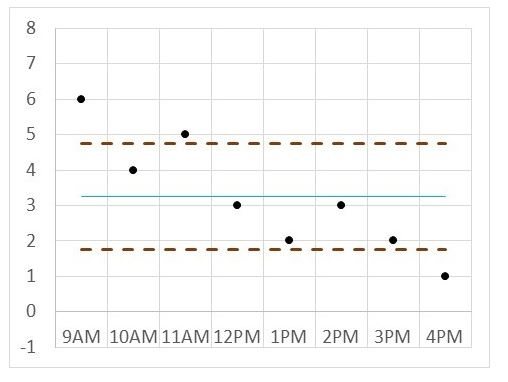


The X-R chart is a method of looking at two different sources of variation. In situations such as this (when you want to monitor averages over time but still keep track of the variation between individual results), the X-R chart is very useful. Thus, another idea is to keep track of the range in scores for the three games each night. You are also interested in being more consistent, i.e., not having one great game followed by a poor one. You definitely would like to increase that average over time. So another idea is to plot the average of the three games each night. However, you are more interested in what your average score is on a given night. What are some different approaches you could use? One idea is that you could plot the score from each game. You are interested in determining if you are improving your bowling game. You bowl three games a night once a week in a bowling league. Suppose you are a member of a bowling team. These charts are a very powerful tool for monitoring variation in a process and detecting changes in either the average or the amount of variation in the process. The other chart is for subgroup ranges (R). Like most other variables control charts, it is actually two charts. The X-R chart is a type of control chart that can be used with variables data. Next month, we will look at a detailed example of an X-R chart. This month we introduce the chart and provide the steps in constructing an X-R chart. This month is the first in a multi-part publication on X-R charts.


 0 kommentar(er)
0 kommentar(er)
